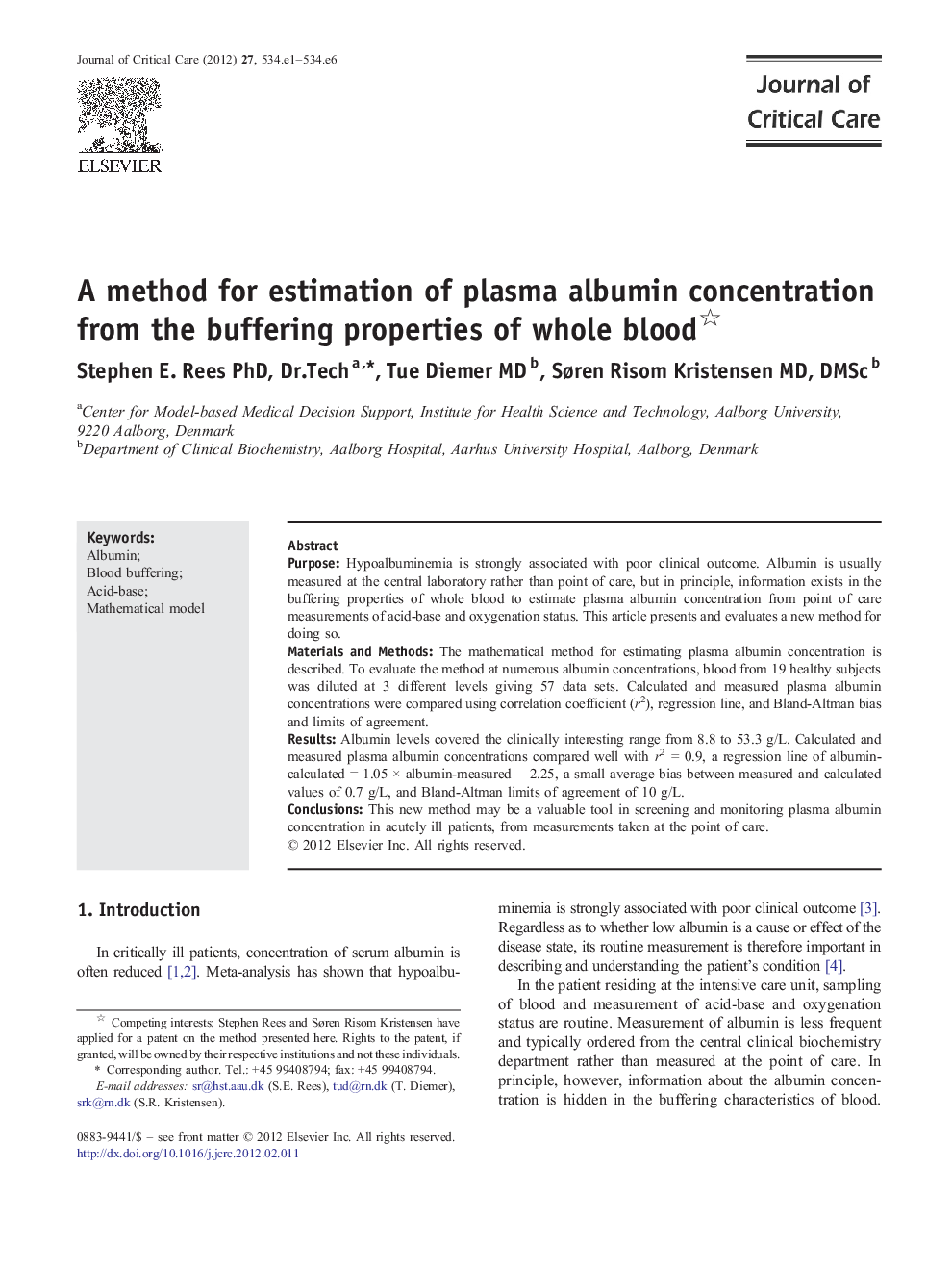| Article ID | Journal | Published Year | Pages | File Type |
|---|---|---|---|---|
| 5885785 | Journal of Critical Care | 2012 | 6 Pages |
PurposeHypoalbuminemia is strongly associated with poor clinical outcome. Albumin is usually measured at the central laboratory rather than point of care, but in principle, information exists in the buffering properties of whole blood to estimate plasma albumin concentration from point of care measurements of acid-base and oxygenation status. This article presents and evaluates a new method for doing so.Materials and MethodsThe mathematical method for estimating plasma albumin concentration is described. To evaluate the method at numerous albumin concentrations, blood from 19 healthy subjects was diluted at 3 different levels giving 57 data sets. Calculated and measured plasma albumin concentrations were compared using correlation coefficient (r2), regression line, and Bland-Altman bias and limits of agreement.ResultsAlbumin levels covered the clinically interesting range from 8.8 to 53.3 g/L. Calculated and measured plasma albumin concentrations compared well with r2 = 0.9, a regression line of albumin-calculated = 1.05 Ã albumin-measured - 2.25, a small average bias between measured and calculated values of 0.7 g/L, and Bland-Altman limits of agreement of 10 g/L.ConclusionsThis new method may be a valuable tool in screening and monitoring plasma albumin concentration in acutely ill patients, from measurements taken at the point of care.
